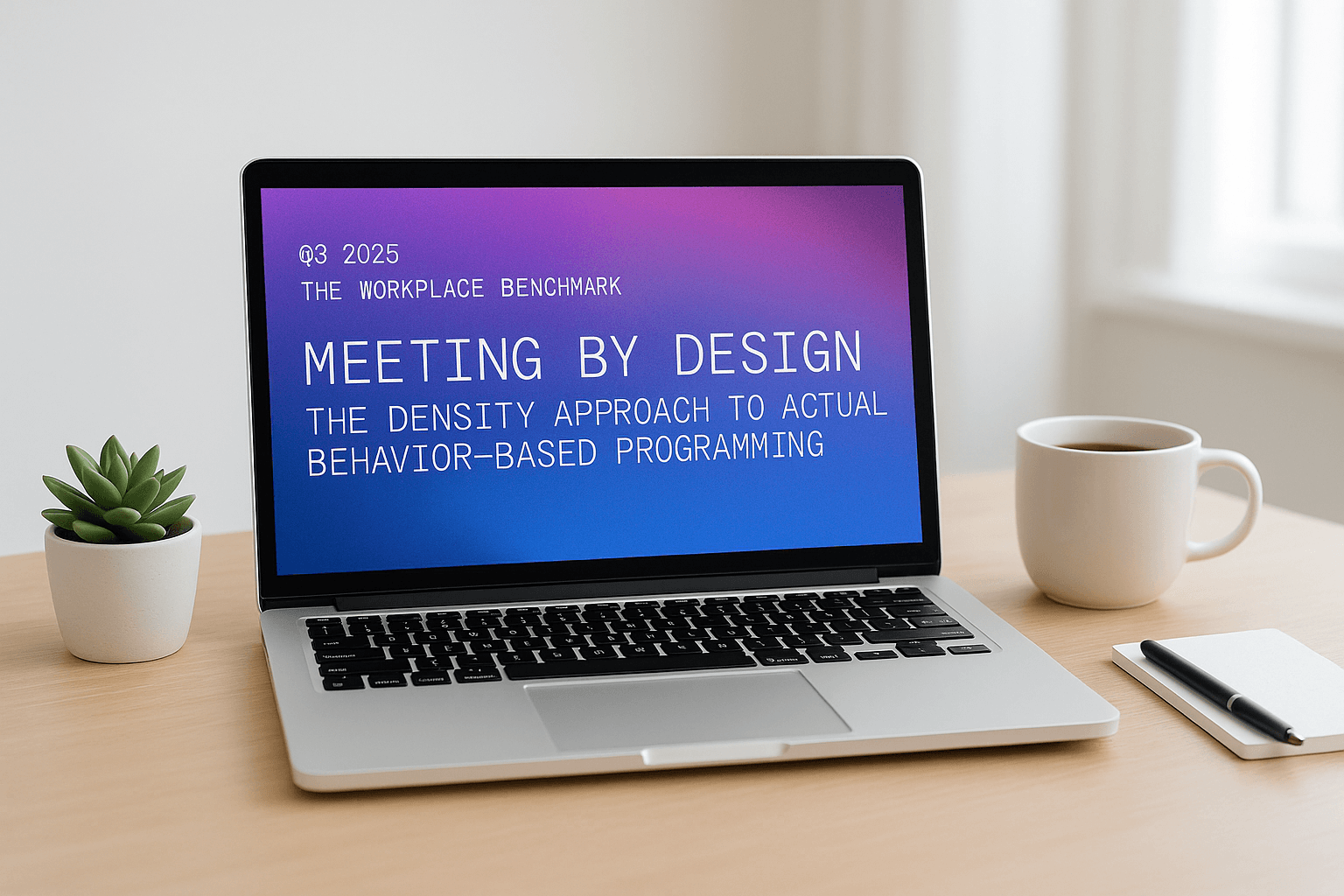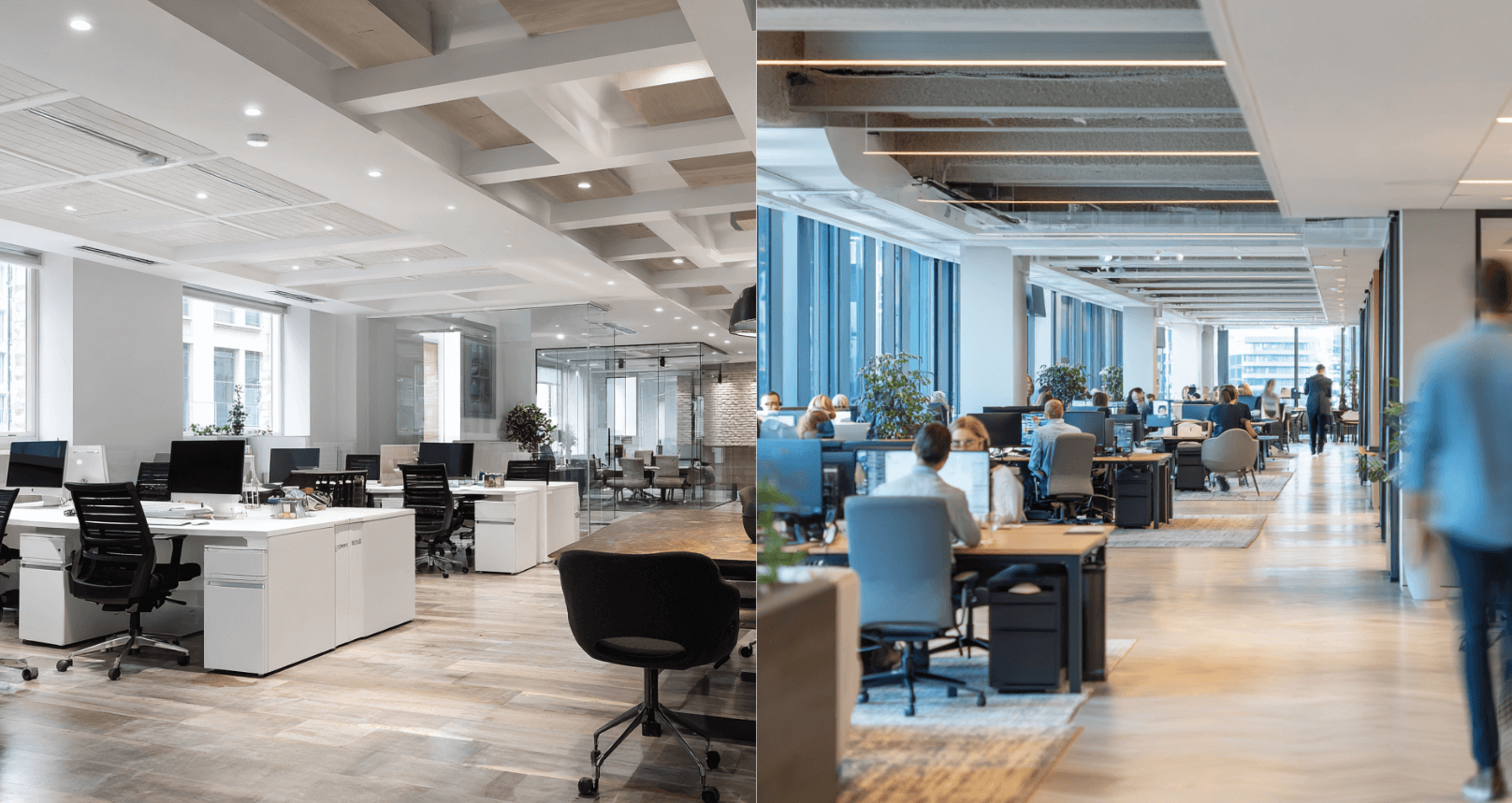Are tech offices keeping up with the future of work?
Research by Density and Hassell suggests tech offices may be struggling to keep up with today's hybrid work realities.

The tech industry was once the pioneer of innovative workplace strategies. But research by Density and international design firm Hassell suggests tech office designs may be struggling to keep up with today's hybrid work realities. Even at peak times, 66% of office space is going unused, wasting up to $40M per year on underused space.

The latest in Density’s Workplace Benchmark research series, the State of the Tech Workplace report examined a full year of data across over 1.4 million square feet of tech office space.
Three key takeaways:
The findings reveal some striking disconnects between how tech workplaces are designed and how they are actually being utilized under hybrid models.
1. Return-to-office policies have less impact than you'd expect.
You'd think enforcing a 3-day in-office hybrid policy would significantly boost workplace utilization versus giving employees full flexibility. But the data shows only a 17% increase in peak utilization, from 29% to 46%. This suggests RTO mandates aren't being consistently followed or may be impacting workplace presence less than expected.

2. Flexible policies fuel in-office face time.
When employees can choose their work mode, they spend 48% of in-office time in meeting spaces - nearly double the 23-29% of time in meeting rooms for those on set hybrid schedules. It seems giving autonomy leads employees to come in for meetings.

3. Open offices miss the hybrid mark.
Every tech workplace studied had an open-office layout optimized for bodies being present full-time. But in a hybrid world, these spaces struggle to provide quiet areas for video calls and heads-down work when needed. As a result, 36% of the time meeting rooms are used by just one person.
Does your tech workplace need a reboot?
Unlock data-backed recommendations to optimize your office for evolving work styles, maximize space utilization, reduce costs, support collaboration, and more.
Don't let your workplace design fall behind - download the report now.
Key Takeaways

DisruptCRE founder shares how corporate real estate is changing
Companies are moving employees from underutilized offices into "space as a service” options with utilization data.
Watch now
Half of offices are empty but you still can’t find a meeting room
Employees waste up to 30 minutes a day looking for a meeting room to meet in workplaces.
Read moreMost recent

Meeting space playbook: programming ratios that really work
Forget static formulas. This new research-driven playbook shows how to use real behavior to right-size your office for today’s meetings.

Space waste: The industry’s naughty and nice list
Our sensors spilled the beans: What industry is winning, who's wasting and who's hogging your office real estate.
.png)
Improve your occupancy sensor RFP with our best practice guide
Discover essential questions to simplify your occupancy sensor RFP process and confidently choose the right vendor.
.png)
Room raiders: The office upsizing epidemic
Tiny teams hogging big rooms leave large groups stranded—welcome to the new war for meeting space!
Explore other Density Products
Atlas for Workplace
Insights for the workplace that help you cut costs and deliver better spaces.
Learn more